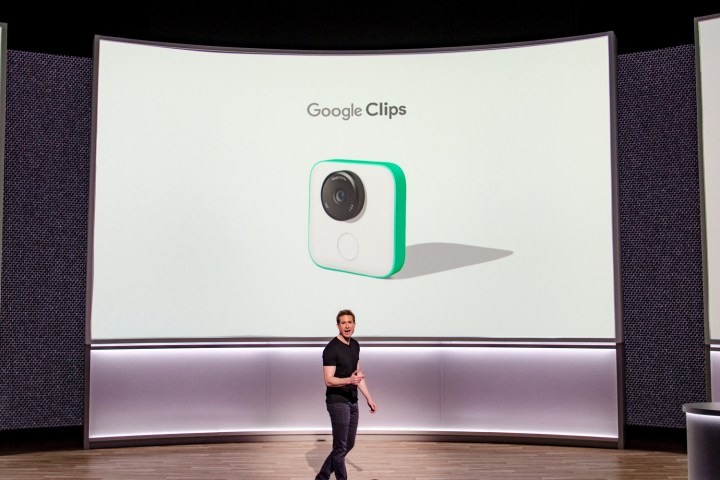
The Pixel 2 and Pixel 2 XL were joined by quite a lot of other, far less interesting products. Imagine if they weren’t.
Think about it for a moment A five-minute introduction from Sundar Pichai, a 15-minute Google Home and Home Mini presentation, and a 30-minute deep dive into the Pixel phones, all rounded out with a rousing conclusion and ultra-competitive price announcements. It would take one hour, maximum; the crowd leaves elated, and we’re all too busy pre-ordering to write this.
Except Google didn’t do that. It filled another hour with a collection of side-projects, ill-conceived niche hardware for beardy types in San Francisco that no one will really want. If Santa used any of them as stocking fillers, we’d all be blocking the chimney up on December 24.
Google has two good products, why can’t it leave it at that?
The good
Let’s start with the positives. The Pixel 2 and Pixel 2 XL are almost one and the same. Google’s masterstroke here is not forcing anyone to buy the $850 Pixel 2 XL to get better features. The Pixel 2’s camera, processor, memory, and design mirror the XL; the only difference between them is the screen. Yes, it’ll be nice to have the 18:9 ratio display, but hardly a necessity, and not for an extra $200.
The second highlight is what it’s missing: A second
Add in a more attractive design than the Pixel phones, the Snapdragon 835 chip, fast charging, and the latest version of Android — for three years, due to Google’s update promise — and we’re sold on the Pixel 2. We don’t need the AR stickers, Google, but we’ll let you have a little bit of fun because you’ve been so good.
We’re happy about Google Home Mini. Google Home is an excellent smart home controller and assistant. It looks pretty, works consistently, and has more helpful, everyday features than Amazon Echo. It integrates with more devices, services, and products we use on a daily basis too, so making a smaller, cheaper version is logical and welcome. Even at this early stage, we can say fairly confidently these products will be worth buying, unless something catastrophically bad turns up when we review them.
The bad
Google should have stopped there, but it can’t help itself. We’ve seen this before. Google, like a puppy, gets really overly excited. Puppies make a little mess on the floor when this happens, and Google has essentially done the same, giving us the Pixel Buds, Google Home Max, Pixelbook, and Google Clips. These are easily summed up with, “Me too,” “Me too again,” “How much?” and “Why?” Every last one of these “products” would hardly receive any coverage if it came from any other manufacturer. They’re the worst examples of a company making hardware without an actual buyer in mind.
Don’t believe me? When you stand on stage with a straight face and say your new camera is for capturing those special, easily missed moments when your kids smile and your pets do tricks, it means you have no clue who will buy this product. Genuine use cases sell products, not vague descriptions of people who only exist in commercials. Apple knows, that’s why its own launch events sell products so convincingly.
Don’t let the demo of Pixel Buds real-time language translation service fool you either. We’ve all used Google Translate, so we know what a complete pig’s ear it can make of translating conversational language. Google really should have written “Canned language demos are not representative of real world use,” on the screen when the Buds were shown in action.
These should have been five-minute things-to-come tech demos. Not products. They each have some cutting-edge technology under the hood that’s worth mentioning. For example, Google Clips has its own on-device AI processing tech, instead of using the cloud, meaning more speed and increased privacy. This is very similar to what Huawei is doing in the forthcoming Kirin 970 chip, and it’s very cool indeed. No matter how problematic the Buds’ real-time translation turns out to be, it’s impossible to deny it’s a tantalizing forerunner to way better, and less intrusive translation tech down the road.
Give us what we want, not what you think is cool
When recalling the fantastic reception to last year’s Pixel at the start of his presentation, Google’s Rick Osterloh quipped, “I wish we had a few more of them to go around.” Yes, us too. Based on seven-week wait for some Pixel 2 colors, we’re guessing Google wishes it had a few more of those as well.
Here’s a thought: Stop making products no one wants, and use the money, time, and resources to build more of the ones that people do. We know manufacturing probably doesn’t work that way, but when we can’t buy Google’s best products for weeks, our patience isn’t helped by knowing time is being spent building products only a handful of people are excited about.
Just because other companies have speakers,
That would be a return of the Google we love. Brilliant products at the best prices, with plenty of stock available. Maybe next year?
Editors' Recommendations
- 5 smartwatches you should buy instead of the Google Pixel Watch 2
- Google Pixel Fold 2: news, rumored price, release date, and more
- The Google Pixel Fold 2 just leaked. Here’s everything that’s new
- The Google Pixel Fold 2 just got a lot more exciting
- I was completely wrong about the Google Pixel Watch 2



